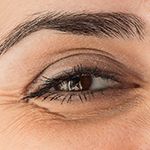Article
Teleretinal Screening Improves Timeliness to Care
Author(s):
The implementation of teleretinal screening could improve clinic workflow.

Teleretinal screening statistically significantly decreases the duration between initiation of hydroxychloroquine and the initial ophthalmic examination in patients with potential hydroxychloroquine retinopathy, according to new study findings presented at the American Society of Retina Specialists (ASRS 2020) Virtual Sessions.
The findings showed teleretinal screening improved timeliness to care by reducing appointment lead times and office visit cycle times for those screened for hydroxychloroquine retinopathy compared to traditional face-to-face visits. Such information could lead to improved resource use and management.
Betty Situ, MD, and colleagues conducted a retrospective cohort study to determine whether hydroxychloroquine teleretinal screenings decreased time-to-appointment and time-in-clinic in a large public county safety net hospital setting. The team used an electronic health record to identify patients at least 18 years old with active hydroxychloroquine prescription orders and visits tat Los Angeles County Department of Health Services from September 1, 2018, to November 25, 2019.
The investigators recorded demographic characteristics such as age, sex, race, language, and insurance status, as well as dates for the first and most recent ophthalmology and rheumatology clinic visits, hydroxychloroquine prescription orders, and ophthalmology electronic referral (eConsult) requests. They also recorded the presence of major risk factors for hydroxychloroquine retinopathy, included concomitant tamoxifen use, renal disease, and maculopathy.
Primary outcomes of the study included wait times for appointments and office visit cycle times, which were measured from check in to check out. Additional outcomes were the number of visits required to complete screening, the number referred from teleretinal screening to face-to-face visits, the prevalence of detected hydroxychloroquine retinopathy, and the proportion of those who complete hydroxychloroquine retinopathy screening.
Among the patients in the study, the majority of those screened in both groups were female and non-English speaking. The median office visit cycle time for face-to-face visits was 3.7 hours (IQR, 2.5-5.2) compared to 1 hour (IQR, .5-1.8) in teleretinal screening (P <.0001). The median time to appointment for patients having face-to-face visits was 4.9 months (IQR, 2.8-8.2) compared to 2.5 months (IQR, 1.5-4.6) in patients seen through teleretinal screening (P <.0001).
The risk of hydroxychloroquine retinopathy, a sight-threatening long-term side effect of hydroxychloroquine, is reduced with appropriate dosing and timely screening. The study team reported tele-retinal screening may improve access and efficiency of care in a healthcare safety net setting by reducing wait times for appointments and time spent in the clinic.
Situ and the investigators noted the study focused on a single institution in Los Angeles and that results may not be as dramatic outside a safety-net county hospital setting. For example, results could differ in private practice where patients may have greater access to same-day testing. Still, the implementation of teleretinal screening could improve clinic workflow.
The study, “Comparing Clinic Efficiency of Hydroxychloroquine Tele-Retinal Screenings in a Large Public Safety Net Hospital Setting,” was presented at ASRS 2020.





